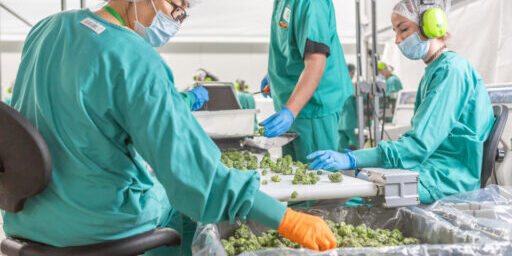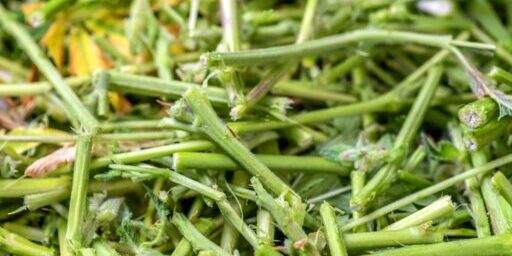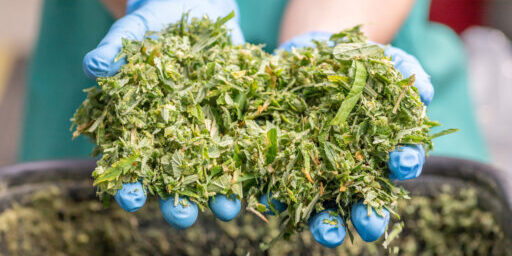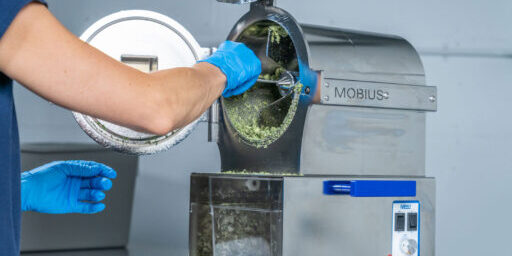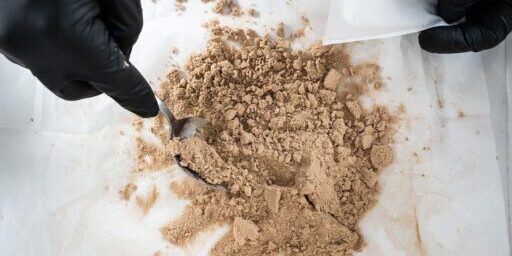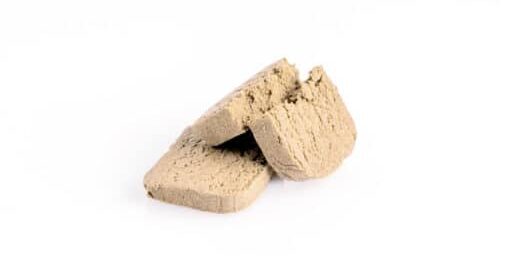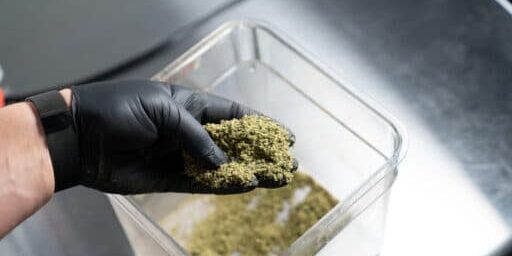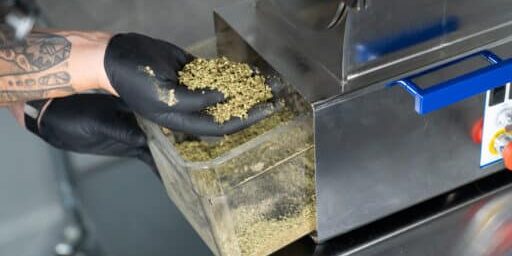Maximizing the Value of Your Small Cannabis and Hemp Flowers
As an entrepreneur, you want to optimize the value of your crop — from tops to trim. So, what do you do with those small flowers that aren’t trim but aren’t quite top-quality either?
This blog explores several options, including extraction, pre-rolls, and processing partnerships. Regardless of what you’re doing with your “popcorn” flowers now, you could probably make more money if you rethink your options. That’s because sorting your crop by flower size gives you more control over how you market your products.
Your Small-Flower Status Quo
Consider how you’re currently using your small flowers. Are you selling them along with the rest of your loose flower — thus bringing down your overall product quality? Or are you hand-packing pre-rolls in the back room? Rosin?
If you’re considering a more profitable approach, start with a quick analysis of your current strategy.
- How much revenue are your smalls generating now, per pound or gram?
- What are the labor costs of sorting them and processing them into products?
- Is your approach causing headaches or incurring opportunity costs?
Aim to Meet Your Market
You probably know all the ways that you can’t market your small flowers and small-flower-derived products. Some states have vertical-integration requirements that prevent growers from wholesaling to third parties; others states won’t let growers sell directly to the consumer.
Explore what you can do under your license and any permits could diversify your sales channels. California, for instance, has more than a dozen license types. The various licenses let businesses cultivate, distribute, manufacture products, etc. Adding a license opens doors.
Also consider local market trends. If wholesale prices are consistently high, selling to other businesses may be best — and simplest. If concentrates sell at a premium, it might be time to invest in an extraction setup. Same thing with pre-rolls. Look at where the money is in your local market. Be flexible, and go there.
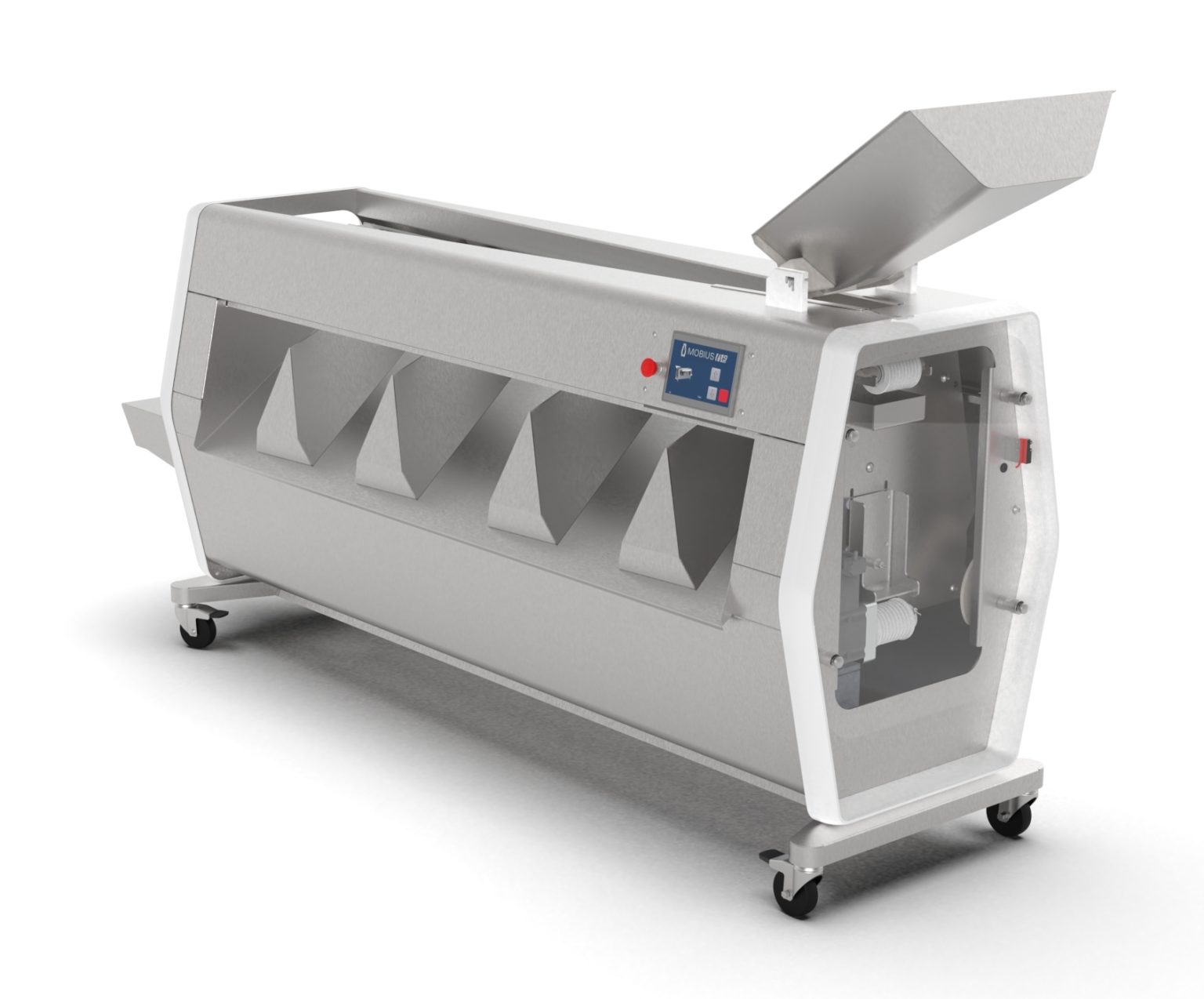 Automated Flower Sorters
Automated Flower Sorters
If you’re a larger producer, consider the Mobius M9 Sorter. It’s a conveyor-style sorter that quickly and gently sorts flowers by size. The conveyor’s diverging belts let smaller flowers drop through first, while larger flowers continue down the line. Learn more at mobiustrimmer.com.
Establishing a Pre-Roll Line
Revenue Potential
The revenue of a pre-roll line depends heavily on sales channels and branding. Vertical integration is the most profitable scenario, whereby the grower can cut out the middleman and sell pre-rolls directly to the consumer (at price-per-gram that’s significantly higher than loose flower).
Average Price of Pre-Rolls by State (2021) |
||
|
Single |
5-Pack |
|
|
Oregon |
$8.20 |
$22.00 |
|
California |
$13.40 |
$34.00 |
|
Nevada |
$11.20 |
$26.60 |
|
Michigan |
$9.60 |
$23.40 |
Selling through a third-party dispensary will obviously lower your margins but may increase your distribution. Some companies are able to sell their branded pre-rolls at their own locations while also using a distribution network of other retailers.
Pre-Roll Expenses
Gone are the days of budtenders packing cones during their downtime. Mechanization is critical for a profitable pre-roll line. Consider these purchases.
- Multi-Cone Filling Machines
New machines from brands like Futurola and King Kone reduce cone-packing time remarkably. These units fill hundreds of cones with ground cannabis or hemp in mere minutes. The devices typically arrange the cones upright and vibrate plant material into the cones. The pre-roll’s weight is determined by cone size and particle diameter. Expect to pay several thousand dollars for one of these machines.
- Cannabis and Hemp Mills
A mill (or grinder) cuts your smalls into precise size for optimal pre-roll filling and an even burn. The Mobius M210 mill, for example, uses a rasp to achieve a pre-roll-friendly particle size of 1/16” — without creating excess powder and sacrificing trichomes. The M210 processes dry flower at a rate of 110 pound/hour. Quality cannabis and hemp mills range in price from $30-40K.
- Packaging, Cones and Cannabis
Packaging and branding are the only differentiators for pre-rolls at the display counter, so make sure to strike a balance between good looks and a low per-unit price. Plastic pop-top tubes cost as little as $0.09/unit; premium glass tubes and other materials may cost upwards of $1.00.
Pre-roll tubes should be certified by the Consumer Product Safety Commission (CPSC) for child resistance. If not, you may need secondary packaging to meet regulations.
Cones cost as little as $0.07, or as much as $0.30 for hemp-based papers. The pre-gram production cost of cannabis varies widely. You know your numbers.
- Labor Costs for Pre-Rolls
Labor costs will vary based on automation more so than the hourly wage you pay employees. A high-throughput mill and a fast cone filling machine will cut labor to a fraction of slower technologies.
Consider labor as a per-unit “cost of goods sold.” A good way to estimate labor is on a per-batch basis. How many pre-rolls can be made over a four-hour shift when equipment cleaning and other tasks are included?
For example, if two employees work four hours to produce 1,000 pre-rolls at a wage of $15/hour, the labor cost per pre-roll is $0.12/pre-roll.
Establishing a Line of Concentrates
Extraction Revenue Potential
Extracting the cannabinoids from your smalls— with or without solvents — can create a lot of revenue because concentrates can sell for upward of $100/gram. The retail price is wildly variable based on the market and product type.
But, like with pre-rolls, your profitability will depend on distribution. If you’re the consumer-facing retailer, margins will be higher than if you’re wholesaling. Check your local market prices, and assess your distribution channels before making revenue predictions.
Extraction Expenses
The startup and operating expenses of an extraction business vary widely, based on the extraction machine and auxiliary equipment. Whatever your choice of extraction solvent, a few pieces of equipment will be common to most extraction operations. Expect to purchase a low-temperature freezer, a cannabis/hemp mill, glassware, and possibly a rotary evaporator for distillation. The price tags for those items will total $100K or more depending on the manufacturer, model, etc.
Budget for a consultant if you’re implementing a solvent-based extraction operation. Their insight will help you pick the right system and properly train your personnel. Also know that the throughput capacity of your system will have a major impact on your revenue and ability to scale.
Here are the expenses to expect with the most common system types.
- CO2 Extractors
A carbon dioxide (CO2) extractor is the most sophisticated type of extraction system. Based on the temperature and pressure of the CO2, operators can precisely extract some compounds while leaving others behind.
High-pressure pumps and computerized controls drive the price of CO2 extractor north of six figures. And you may also need to update your electrical service to accommodate the new machine.
CO2 machines typically have a lower throughput (longer runtimes) than hydrocarbon and ethanol systems, which limit their potential returns. Still, some consumers value clean, “solvent-free” CO2 extracts. However, you’ll need to winterize CO2 extracts using an ethanol solution and a distillation system (which adds considerable upfront cost). A CO2 system will also require finely milled input material — and the purchase of a precision cannabis and hemp mill.
- Hydrocarbon-Based Extractors
Hydrocarbon machines have a lower sticker price than their CO2 equivalents yet higher capital expenditures overall. To process with volatile solvents like butane and propane, you’ll need a specialized workspace to prevent explosions. The renovation and equipment can total twice the cost of a CO2 system — or more. Other costs include vacuum ovens, costly solvent, and more extensive permitting.
Yet operating a hydrocarbon machine is simpler and faster than a CO2 unit, and your long-term revenue may be much higher. Hydrocarbons are powerful solvents that, due to their polarity, remove cannabinoids and terpenes from the plant very quickly while leaving behind other compounds like chlorophyll. The resulting extract can be used for a wide range of products.
- Ethanol-Based Extractors
Ethanol has emerged as the prefered solvent of most edibles and tincture manufacturers. It’s also a great choice for high-volume hemp applications. Like hydrocarbons, ethanol is a powerful solvent. Ethanol equipment is simpler and cheaper, and requires less infrastructure than hydrocarbon-based extractors.
However, ethanol distillation is electrically inefficient because it requires large amounts of heating and cooling energy. You’ll also need a lot of time to distill the ethanol, and a large workspace.
Solvent-Free Extraction
Not all extraction processes require chemical solvents. Some use heat and pressure (like rosin) or mechanical separation (like kief). These technologies make market entry more feasible for smaller operators looking to optimize their smaller flowers.
- Rosin
Rosin is low-hanging fruit for cultivators wanting to optimize their popcorn. All you need is a rosin press and some mesh bags. What’s more, a quality rosin press costs less than $5,000.
However, labor costs will forever hamper your returns on rosin. The rosin pressing process — loading bags, pressing, collecting and scraping — cannot be automated. Yields are lower and the process is slower.
- Kief
Separating the trichomes from low-quality smalls is a simple way to increase their value. For small flowers, a kiefing strategy would require a mill and an ice-water extractor. You can sell the kief straightaway or leverage the kief into greater efficiency in other processes. The yield of your rosin machine, for instance, will greatly improve when you’re using a higher-potency starting material like kief.
Cost of Goods Sold
Like with pre-rolls, packaging and labor factor into the expense equation on a per-unit basis. However, in the case of most solvent-based extraction equipment, you’ll need better-paid, well-skilled labor.
A poorly trained technician can do thousands of dollars of damage to your machine. Expect to invest more money into employee training, and cross your fingers during the hiring process. Responsible, attentive people are hard to find.
You’ll also be paying for consultants to help optimize your extraction processes. Consultants are very worthwhile because they can increase your yields and fine-tune your processes.
Cannabinoid Extraction as a Service
If extracting with solvents sounds intimidating, you can let somebody else handle the details. Third-party service providers will process your crop into oil for a hefty fee.
But an extraction service may be well worth the lower profit margin because these companies handle all the important details. They ensure Good Manufacturing Practices, provide skilled labor, and can assist with product development. Moreover, these services let you avoid the high capital expenditures of extraction and distillation equipment.
Extraction service providers are a good way to dip a toe into the concentrate market without risking hundreds of thousands of dollars. Down the line, you can move extraction in house and boost your profits, but when you’re getting started, simplicity is priceless.
In some jurisdictions, cultivators can employ a third-party extraction service without interrupting the chain of custody. Cultivators may be legally required to maintain possession from seed to sale, but an extraction service can be contracted as an “employee,” which essentially means the product never left your hands.
Often, the crop doesn’t need to leave your property either. The service provider will come to you, with a mobile extraction lab in tow.
Marketing Pre-Rolls and Concentrates
You’ll need to market your new products well because cannabis and hemp are quickly becoming commodities.
Usually, customers at the dispensary aren’t allowed to smell concentrates at the counter, and with pre-rolls, they can’t see the flower to assess its quality. That’s why you need to cultivate a strong brand to attract buyers and repeat business.
You have control over how much you invest into marketing. But, unless you’re the final, consumer-facing retailer of your pre-rolls and concentrates, a decent-sized marketing budget is non-negotiable.
Start with “brand ideation.” How are you different from competing manufacturers? Cheaper or more quality-oriented? Appealing to a demographic niche? You’ll work with a marketing agency or graphic design to create your visual assets and packaging design. Finally, you may advertise in print and digital publications.
Wholesaling your concentrates— if it’s permissible in your jurisdiction — can cut out a lot of most marketing expenses. Establishing a few relationships with product manufacturers is easier than launching a marketing campaign. They can take care of branding, advertising, etc.
Sorting for Success
Cannabinoid potency varies widely, even within the same genetic profile. Potency varies from crop-to-crop, plant-to-plant, and between individual flowers from the same plant. It’s a well known fact that upper flowers are more potent than those deeper in the canopy.
That’s why it’s critical to sort your harvest. Sorting your smalls from the rest gives you more control. It means you can sell your top-quality material for more, and you’re empowered to put the popcorn to its best use, whether its pre-rolls or extracts.
If you’re ready to leverage flower sorting — or improve your overall post-harvest processing — contact Mobius. Our commercial team will help you integrate equipment that makes sense for you based on your infrastructure, throughput, and goals for the future.
